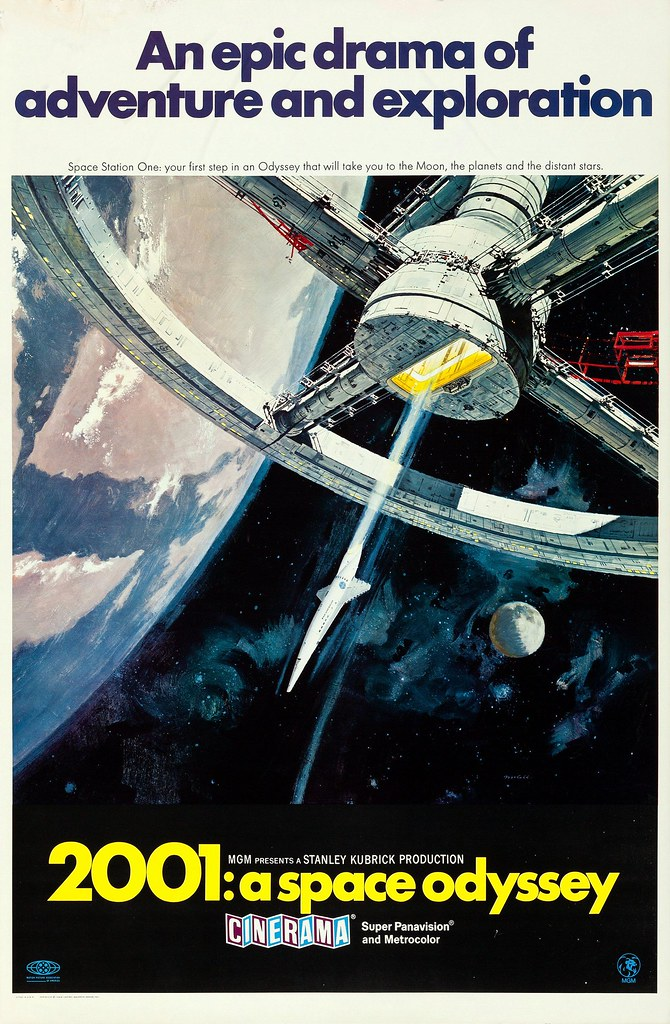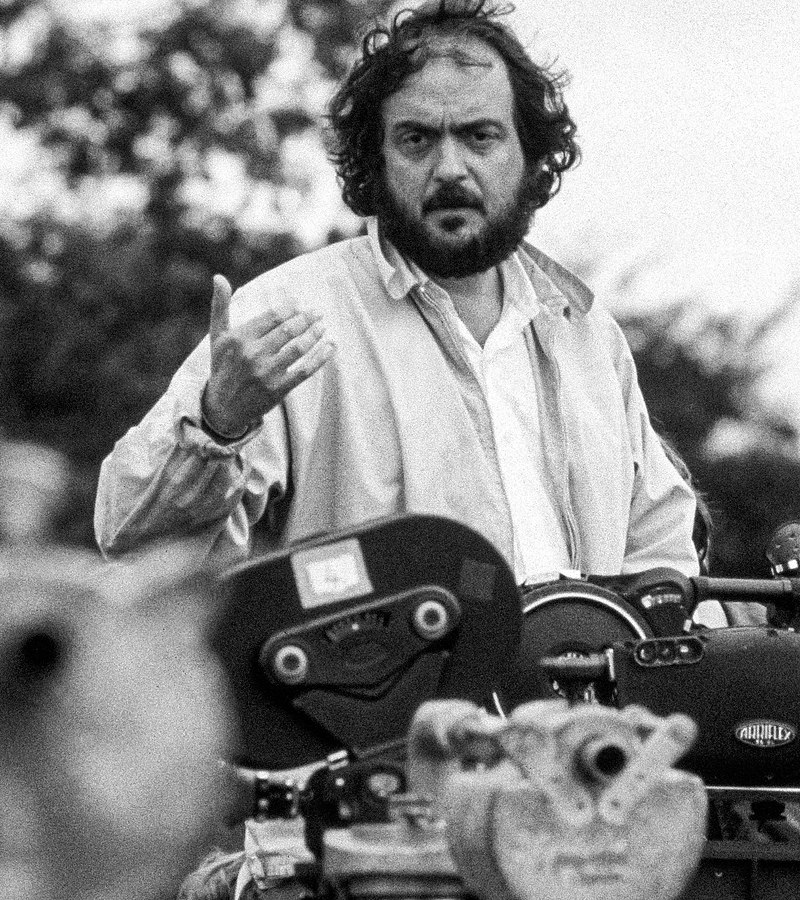Title of the work
Studio / Production Company
Country of the First Edition
Country/countries of popularity
Original Language
First Edition Date
Running time
Format
Awards
Oscar (Best Effects, Special Visual Effect – Stanley Kubrick),
BAFTA Film Award (Best Art Direction – Anthony Masters, Harry Lange, Ernest Archer),
CEC Award (Best Foreign Film),
Hugo: Best Dramatic (Stanley Kubrick, Arthur C. Clarke),
KCFCC Award (Best film; Best Director – Stanley Kubrick),
Golden Laurel (Road Show),
NBR Award (Top Ten Films),
OFTA Film Hall of Fame (Motion Picture).
Genre
Action and adventure fiction
Science fiction
Target Audience
Crossover
Cover

Style A movie poster by Robert McCall. Retrieved from Bob Sinclair's page at flickr.com, licensed under CC BY-NC 2.0 (accessed: December 30, 2021).
Author of the Entry:
Yauheni Pipko, Belarusian State University, eugenepipe@skillet.ru
Peer-reviewer of the Entry:
Hanna Paulouskaya, University of Warsaw, hannapa@al.uw.edu.pl
Lisa Maurice, Bar-Ilan University, lisa.maurice@biu.ac.il

Retrieved from Wikipedia, public domain (accessed: December 30, 2021).
Stanley Kubrick
, 1928 - 1999
(Director, Producer)
Stanley Kubrick was a great film director, photographer and producer. Kubrick was one of the most popular producers of sci-fi films in the 20th century and produced 16 films. His family was rich and his parents allowed him to do whatever he wanted. When he turned 13, his father gave him the first camera; this was the moment when Kubrick began to take a great interest in photography. His first film, which was called Day of the Fight, was produced in 1951. Kubrick received many awards in his life and became an idol for many people.
Source:
John Baxter, Stanley Kubrick: A Biography, HarperCollins, 1998.
Bio prepared by Yauheni Pipko, Belarusian State University, eugenepipe@skillet.ru
Casting
Keir Dullea – Dr. David Bowman,
Gary Lockwood – Dr. Frank Poole,
William Sylvester – Dr. Heywood Floyd,
Douglas Rain – the voice of HAL 9000,
Daniel Ritcher – Moonwatcher,
Leonard Rossister – Dr. Andrei Smyslov,
Margaret Tyzack – Elena,
Robert Beatty – Dr. Ralph Halvorsen,
Sean Sullivan – Dr. Roy Michaels,
Frank Miller – mission controller,
Edward Bishop – Lunar shuttle captain,
Edwina Caroll – Aries flight attendant,
Penny Brahms – flight attendant,
Heather Downham – flight attendant,
Maggie d’Abo – flight attendant,
Chela Matthison – flight attendant,
Judy Keim – Voiceprint identification girl,
Alan Gifford – Poole’s father,
Ann Gillis – Poole’s mother,
Vivian Kubrick – Floyd’s daughter,
Kenneth Kendall – BBC announcer.
Summary
“2001: A Space Odyssey” is an epic sci-fi film produced by Stanley Kubrick in 1968, which became a milestone in the development of fiction movies and world cinematography. The producer, inspired by the Homer’s epic “The Odyssey”, gave the film its name. Kubrick said: “It occurred to us that for the Greeks the vast stretches of the sea must have had the same sort of mystery and remoteness that space has for our generation”. The plot of the film concerns foreign artefacts, which are called monoliths. The first monolith hits the Earth and teaches a tribe of hominids how to use different items as weapons. Many years later, in the 20th century, the second monolith is found on the Moon, which sends a powerful signal to outer space. In eighteen months, the third artefact, much larger than the lunar, is found on Jupiter. Expedition “Discovery” is sent to explore this monolith, but people on board the ship do not know the purpose of this trip. At the end of the film one crew member wants to explore the 3rd artefact, and it takes him beyond the Infinite – 20.000 light years from the Earth, where he sees strange cosmological phenomena. The 4th monolith turns him into a “Star Child” and he looks at the Earth in a new guise. All monoliths are identified as stages of human evolution.
Analysis
“The Odyssey” has a great influence on the culture of different peoples, and Kubrick was no exception. As in Homer’s epic, the film concerns travel through space and time, but where Odysseus’ journey covers only 10 years of his life, the story of the film stretches for many centuries. The journey is filled with various dangerous situations: Odysseus must fight to stay alive and save his companions, while many creatures (Polyphemus, Sirens, Charybdis, Scylla etc.) want to kill them and prevent them from getting home in every possible way, in the end, he returns alone to his homeland. Similarly, in the film artificial intelligence kills the scientists, and only one member of the spaceship arrives at the destination and learns that the monolith hides there. Despite many difficulties, Odysseus comes home and he is happy with his family (as it’s written in the 23th book of the “Odyssey”) while the film shows how a man becomes a “Star Child” and how he is devoid of any suffering.
There is a quest element in both the epic poem and in the film: Telemachus looks for his father and in the end he finds him. So too, the main character of “A Space Odyssey” finds the monoliths that save him from wandering.
It is possible to draw a parallel between the monoliths and the places where the main character of Homer’s epic stays. They both are stages of wandering, which lead Odysseus and the main character of the film to success: the 1st monolith is like the place, where Odysseus’ journey begins after the Trojan War, while the 4th monolith is like Odysseus’ home.
There are also some differences, however. Women are strongly involved in the adventures of Odysseus (Circe, Calypso, Nausicaa, Penelope), while the film does not contain love stories, and is permeated with a different philosophical message. The main character of the epic poem wants to go home because he loves his family, but in Kubrick’s film there are no elements of “human” and “home”. Instead, Kubrick shows the stages of human evolution.
The Kubricks film (made in 1968) was ahead of the reality of that time, but it wasn’t the first or a breakthrough because there were many such ideas in science fiction, for example, in 1902 (“A Trip to the Moon” directed by Georges Méliès). Nevertheless, “A Space Odyssey” is still interesting, and not only for adults, but also for young people because it makes them think about many things and ask themselves “Who am I? What should I do to find my place in society? How can I understand science?”. Because of the film the youth can learn that technology, which simplifies life, can ruin mankind, that there are many unknown things in the world, that the myths have not died, but are an inspiration for many people.
Further Reading
Agel, Jerome, The Making of Kubrick’s “2001”, New American Library, 1970.
Baxter, John, Stanley Kubrick: A Biography, HarperCollins, 1998.
Homer, The Odyssey, trans. S. H. Butcher, Andrew Lang, South Carolina: CreateSpace Independent Publishing Platform, 2014.
Movie in the databases:www.imdb.com
Addenda
Release Date: April 3, 1968 (USA), May 15, 1968 (UK)
Trailer Available Online
Budget: $10.5–12 million
Box office: $138–190 million


